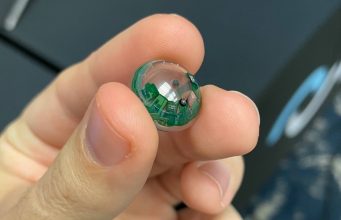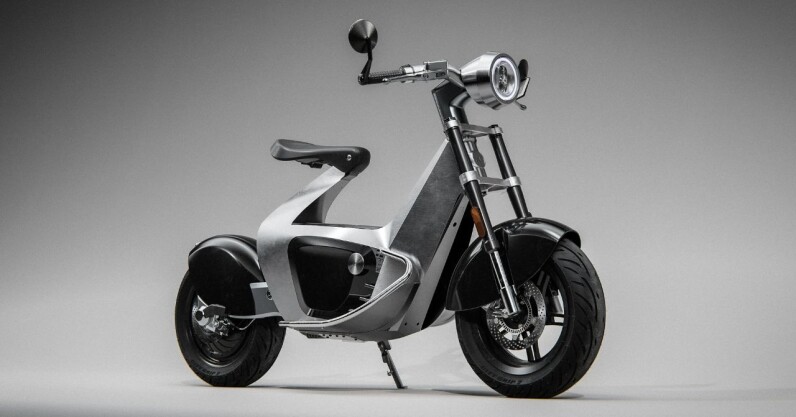TNW València 2023 was a blast — here are our favourite moments
For 16 memorable years, TNW Conference has been at the center of Amsterdam’s tech ecosystem, but on March 30 and 31, TNW València brought — for the very first time — the heart of tech to Spain’s east coast.
But we didn’t choose Valencia simply for its bright blue sea, delicious paellas, or sunny weather. The vibrant city is Spain’s fastest-growing entrepreneurial ecosystem, and has the most startups per capita of anywhere in the country — transforming itself into Mediterranean’s startup powerhouse.
“Valencia’s tech ecosystem is a breath of fresh air,” says Myrthe van der Erve, TNW’s CEO.
At València’s marina, the conference brought together over 300 startups, 90 exhibitors, 100 speakers, and 75 investors to discover what’s next in tech and connect with industry pioneers, C-level executives, department heads, and product developers.


The <3 of EU tech
The latest rumblings from the EU tech scene, a story from our wise ol’ founder Boris, and some questionable AI art. It’s free, every week, in your inbox. Sign up now!
During the two days, over 2,000 attendees enjoyed inspirational talks, networking events, deals, pitches, and the same festival vibes as our Amsterdam flagship. Across 105 meetings and 50 mentoring sessions, the event also delivered real business outcomes.

Here are some of our favourite moments:
1. The official opening ceremony and party
The fun started on March 29, a day before the conference’s agenda kicked off. At our opening party at Zeus València, we enjoyed drinks, bites, and networking right by the sea — dancing the night away with like-minded tech enthusiasts.

Our guestlist also contained an array of the city’s most influential politicians. These included Diana Morant, Spain’s Minister of Science and Innovation; Sandra Gomez, Deputy Mayor of València; Arcadi España García, Minister of Finance of the Generalitat Valènciana; and Borja Sanjuán, Deputy Mayor of Economic Development at the City of València.

2. Unmissable speakers
We assembled a sensational line-up of keynote speeches, fireside chats, panel discussions, and workshops.

These featured inspiring founders, such as Vivino’s Heini Zachariassen and Zeleros Hyperloop’s David Pistoni; influential investors such as Speedinvest’s Jullian Blessin and BMW i Ventures’ Marcus Behrendt; and key representatives of the Valèncian tech ecosystem, including Guillermo Sánchez, Project Manager at Invest València, and Lucia Calabria, Deputy Director of Entrepreneurship at València Activa.

Amongst the many highlights, Jen Carter, Global Head of Technology at Google.org, talked about how technology is being harnessed to help nonprofits; Katica Roy, award-winning gender economist and founder of Pipeline Equity, explained how companies can increase their profit by closing the gender equity gap; and Alex Roca, who recently became the first person with a 76% physical disability to complete a marathon, spoke about the importance of resilience and self-confidence.

3. The FT Power Hours
The Financial Times, our beloved parent company, brought some of their brightest minds to València. At a series of sessions called FT Power Hours, they talked about tech’s latest business trends with industry leaders, including Teresa Parejo Navajas, Head of Sustainability and Social Corporate Sustainability at IBERIA, and Juan Manuel Diez, Strategy & Innovation Director at Port Authority of València.

4. The Startup Pitch Battle
In a fiery TNW València pitch battle, eight of Europe’s hottest startups survived a series of knockout clashes to reach the contest final on March 31.

Following 10 minutes of nail-biting voting, our audience and all-star jury selected a winner: Crowmie. The València-based startup has developed the first investment platform in tokenised renewable energy projects.

Crowmie won an array of amazing prizes, including a 4 square-meter exhibitor’s booth at TNW València 2024 and two business passes for TNW Conference in Amsterdam on June 15-16. But the best of all the prizes? A full profile feature on TNW’s website by our beloved media team.
5. The closing party
It goes without saying: a proper tech festival needs an unforgettable closing party. Attendees and TNWers alike ended the conference with a blast, on a dreamy VIP boat right next to the event venue.

6. The Ferris wheel
It wouldn’t be a TNW festival without our emblematic Ferris wheel. There’s no better way to savor fun rides and breathtaking city — or simply trap your interlocutor for a private meeting.

Looking back,TNW València 2023 — powered by The Financial Times and in collaboration with Ajuntament de València — was even better than we could have imagined!

After such a successful first edition, we are set to bring the heart of tech to the bustling Mediterranean city again in 2024! Good news, folks, you can already pre-register here.
And for those of you who (justifiably) can’t wait that long, join us in Amsterdam for TNW Conference, Europe’s leading tech festival, on June 15 and 16.
Don’t miss out on TNW València 2024! Our conference is in high demand, and already sold out this year. By pre-registering now, you’ll be the first to know about our early bird tickets and secure your spot for next year’s event.
TNW València 2023 was a blast — here are our favourite moments Read More »





















